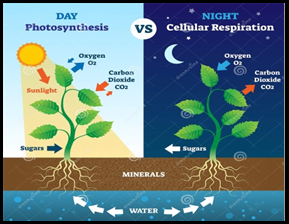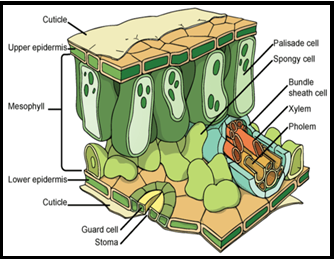

Photosynthesis and Respiration in Plants

|
Comparing Photosynthesis
and Respiration |
|
|
Photosynthesis |
Respiration |
|
Occur in plants |
Occur in all living organism |
|
Food making process |
Food
using process |
|
Trap energy
to produce glucose |
Breaks
glucose to release energy |
|
carbon
dioxide + water |
Glucose
+ Oxygen |
Internal
Structure of Leaf:
Plants make their own food through a
process called ………..
a) Respiration
b) Photosynthesis
c) Fertilization
d) Pollination
Which of these is not needed in the process of photosynthesis?
a) Sun light
b) Carbon dioxide
c) Chlorophyll
d) Oxygen
The small pores or opening in leaves that take in the carbon dioxide are called.
a) Stomata
b) Lamina
c) Phloem
d) Petiole
The……has some small pores called stomata.
a) lower epidermis
b) upper epidermis
c) both a & b
d) none of these
The suitable range of temperature for photosynthesis is…… NTS CT -------2018
a) 50C to 150C
b) 150C to 450C
c) 250C to 350C
d)100C to 250C